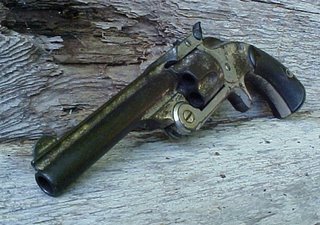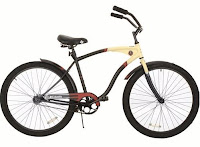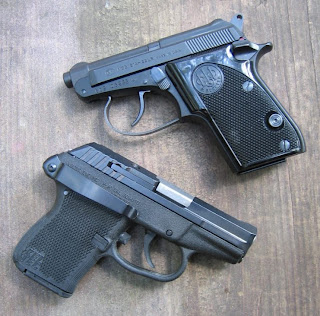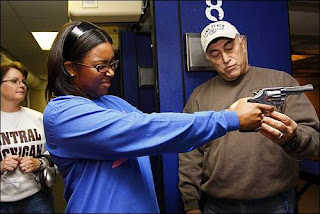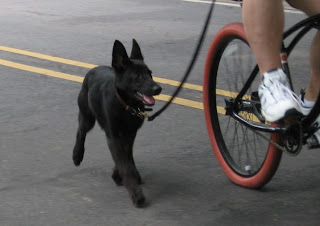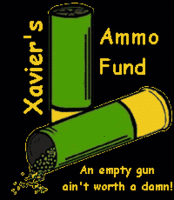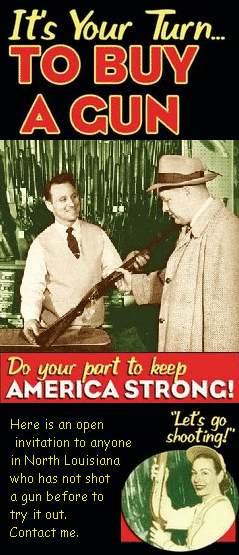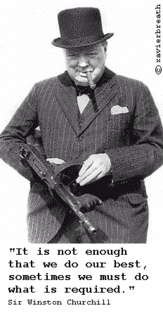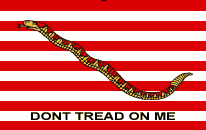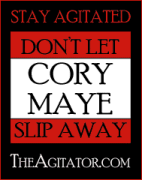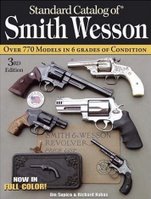I was updating some of my gun photos today, and I realized I never really wrote about taking pictures of firearms. To me, firearms photography is a form of still life photography. It is easy to recognize the gun photographs of those who shoot a lot of them.

Ichiro Nagata, Oleg Volk, Digitshots, and DHart. All are accomplished photographers first, who just happen to also shoot guns. I fall beneath that.
To take good photographs, decent equipment is essential. I once used a Sony Mavica camera for my digital photography. The floppy disc made it easy. I also had an ancient monitor. I thought I was doing pretty good.........Until my monitor gasped up it's last pixel, and I replaced it with a modern flatscreen. Damn.......those low resolution photographs sucked. I immediately went to the pawn shop and purchased an inexpensive camera with a greater memory and higher resolution. I chose a Canon A520. It's a point and shoot camera that has controls that enable the user to manipulate the camera's performance. It is a 4.0 megapixel camera, and is about the minimum pixel requirement for modern internet photo sharing. I honestly don't know much about pixels and digital cameras. To learn about megapixels,
this is a good tutorial. All I know is the new camera makes higher resolution photos that look a lot better on my new monitor. That's good enough for me. I'm an image man, not an equipment maven.
A lot of notable gun photographers use a lightbox for their images. Control of the light in a still life is as important as the items depicted.

Years ago, I earned a degree in fine art. I was a painter and printmaker. I studied under a nationally known still life artist and became engrossed in the work of Chardin, Peto, Wyeth, Harnett and Vermeer. While modern photographers often seek to manage and even generate the light in their imagery, the first photographers worked with what was available, as did painters. Natural light. There are many types of natural light. Painters wax poetic when discussing morning light, noon and evening light. North light is considered the finest by many painters, as it changes less frequently. Painters such as Monet often painted the same subject matter in different paintings, under shifting natural light. These paintings, the foundation of Impressionism, were studies of light and how the human eye deciphers it, not studies of imagery. I relished the work of these painters. Thus, it was only natural that I should chose natural light for my photography.
I take my gun photos outside. I often use a neutral, natural background of weathered and grey wood. I have found that this background appears most appropriate aesthetically, is often a textural contrast, and enhances the image without overpowering the subject matter. On a clear day, I have approximately one and a half hours of the type of light I favor at my chosen location. This light is filtered, but still has a directional, warm quality. To better manage it, I will sometimes use white Foamcore panels to reflect light into shadows and define that which needs illumination. I often shoot thirty or more images from slightly different angles to arrive at a photo with reflections and shadows that characterize the form I desire. Of these images, I chose one.
To place the firearm at the angle I want, I will use erasers or empty shell casings to prop it up.
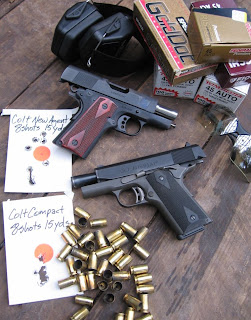
Modeling clay also works well for this, and will not scar the finish. As a still life artist, I dislike the common convention of inserting something through the triggerguard to support the gun. That technique is only seen in gun photography, and as a result it appears odd to me. I do not want my images to appear "posed" even though they often are. I want them to appear as though I happened upon them at the range, and took them serendipitously. A lot of work goes into making my images appear happenstance.
Composition is extremely important to me. Composition is best defined as how items are arranged in a fixed image, preferably with the knowledge that the viewer's eye will travel about the image taking it all in. Poor composition can destroy otherwise technically beautiful photographs. Likewise, good composition can make up for a deluge of technical deficits. Ideally though, the composition should be non-apparent, quietly supporting what the photographer wants to depict. Everything should be considered, from the horizontal or vertical orientation of the image, to associated shooting equipment used to visually lead the viewer's eye throughout the image.
Photography of multiple guns in one image increases the
problems challenges to solve exponentially. Each firearm must be attended to as a primary subject. The visual and mental comparison of similar subjects can often lead to a more interesting image however.

For this reason, I frequently photograph similar firearms together. Firearms often have an interesting "good" side and a drab side. In most cases, the visually interesting side is the side with the controls. Often one side will depict the essence of what the photographer desires better than the other.
Highly reflective surfaces offer unique challenges and solutions. I frequently use Foamcore panels to control and manipulate reflections in nickel guns. Nickel guns can appear rather cold and sterile in a photograph. I will often use colored items outside the frame of the photograph to interject reflected color into photographs of nickel guns. Doing so adds to the overall beauty of the image, and can help set the mood in the photograph.
Weathered and finish worn guns must be assessed for interest differently. The photographer must decide what he wants to depict......A beautiful old survivor of time, or a remnant of what the firearm once was. There is a natural inclination to present a treasured item at it's finest, concealing flaws in a quest for perfection. With weathered firearms, this is often counterproductive.

The photographer must remember he is not producing a beautiful firearm, but rather a beautiful photograph. The texture of time and the scars of use help show the gun for what it is, whether a captivating relic of a bygone era, or a tool of self protection that is carried daily. A lower, raking light helps accentuate this quality, as well as delineate the markings on the gun.
Often with old guns, a simple, stark and empty photo will achieve the photographer's goals nicely. Bare gun steel, worn walnut, and faded bluing on top of a weathered surface is a study in intriguing textures and subtle variations. Other items in the photo would distract the viewer from what the photographer feels is the essence of the firearm. When an image is pared down to the essential subject matter, the elements of design take on a prime importance. Orientation of the image boundaries as well as the firearm itself, the quality and direction of the lighting, along with the colors and textures available are the only tools at the photographer's disposal. If he does not know how to use them, the image will be clumsy and uninteresting. Used well, the result is sublime and engaging.
Years ago, when I studied still life painting, I committed to memory a quote by Max Ernst that is with me still.
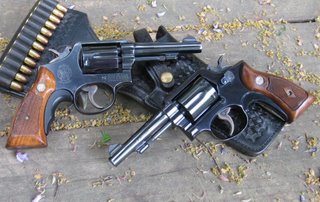
"The association of two or more apparently alien elements on a plane alien to both is the most potent ignition of poetry." The contrast between disparate objects, whether leather, wood and steel, or guns and flower petals presents the viewer with a mental sandwich to chew, contemplate and digest. Photographs of a handgun, a wrist watch and a pocketknife are common and expected. I have not yet tried photographing a Colt 1911 on a buffet of newspaper and crawdad tails, but I'm thinking the result would be as interesting as it would be unusual. When crawdad season opens, I just might have to try it. Maybe a HK USP, a harmonica, and a fried egg. The possibilities are endless as they are beguiling.
Manipulation of a digital photo in a photoshop type program can remove small flaws in the photo that distract from the photographer's intent. I have found, however, it is best to remove the flaws prior to opening the shutter. A chamois rag sprayed with oil will remove dust and fingerprints from the surfaces. A whisk broom will sweep the background clean if desired. A discreet repositioning of the firearm can conceal defects that would distract from the image.

Many people fear revealing the firearm's serial number in a photograph. A photo shop program can be used to subtly alter the serial in the image by a digit or two, mitigating the concern without making a glaring change.
A quick word about safety is in order. The four rules should be followed any time a person is handling firearms, including photographing them. Placing live rounds in a revolver, and then cocking the hammer back and leaning it on an eraser while you snap photographs is foolhardy. If you want brass to show between the cylinder and recoil plate of a revolver, use empty brass. If you want bullets to peek out of the front of a cylinder, use inert rounds. Triple check the status of the firearm, each and every time you handle it. Your mind is preoccupied with the photography you are enjoying, and your hands may do things you otherwise would not allow. The circumstances are ripe for a negligent discharge. Engage the
Four Rules.
Finally, enjoy what you are doing. Gun owners love to look at images of the objects of their desire. Strive for quality work, and share your results. For information on how to share your photographs, go
here. While different from the usual gun photography tutorial, I hope this article has been of benefit. Now go shoot some photos as well as targets!
Labels: Art, Photographs, Photography
 Neil removed a Browning Hi Power from his case to show me. I know next to nothing about the Hi Power, except that some of the guys in my Navy days preferred it, and it is an old, reliable, double stacked single action 9mm handgun.
Neil removed a Browning Hi Power from his case to show me. I know next to nothing about the Hi Power, except that some of the guys in my Navy days preferred it, and it is an old, reliable, double stacked single action 9mm handgun. 


